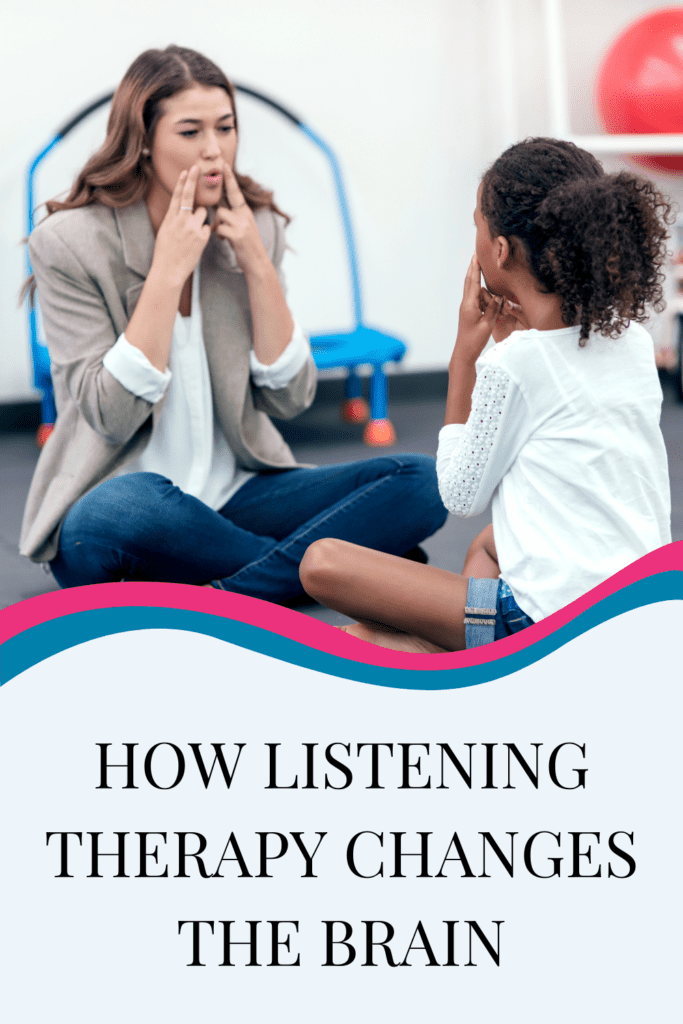You know the stereotype of military dads? Rigid, no nonsense, cynical. I know that you know what I’m talking about. I’m not saying the stereotype is true – I honestly don’t know enough military dads to comment.
But Brian fit the stereotype. The dad of a boy who had ASD, dyslexia, ADHD and SPD sat across from me – desperate, but cynical and said very undiplomatically, “You’re trying to tell me that music and these headphones are supposed to help my son?”
Up until now Brian was very receptive to how movement develops the brain and that it can help re-organize because he was already seeing the results with his son.
He knew about how the brain can change (neuroplasticity), that circuits in the brain can be changed and new pathways in the brain can be created through stimulation that targets certain areas of the brain.
How Listening Therapy Changes the Brain
But listening and music therapy? That was a little too woohoo for him until he understood the science behind it. You see, music enters the auditory nerve and that stimulation goes to two places: the brain and the nerves responsible for motor control.
This is why music and sound therapy can be used for improving language skills like reading, memory, processing, attention as well as motor skills like coordination and balance.
The Ear is Not Just for Hearing
I explained to Brian that movement and the ear were intimately linked. Since sound and balance are interconnected and use the same brain pathways – it is the very systems that manage our daily movements that are the foundation for higher learning like reading, thinking, processing etc.
Brain Power Starts in the Ear
In the book, Listening for Wellness, Pierre Sollier explains that the ear is the generator for the brain and nervous system. The vestibule in the ear converts body movement which become vibrations in the vestibule which becomes energy for the brain.
50% of the required energy for the brain to operate optimally comes from these bodily sensations. This is the reason why music can energize us in the same way exercise does. But this isn’t just about physical energy.
Music Builds New Brain Pathways
Music can energise the brain through stimulation and therefore build new neurons and create new pathways in the brain.
The brain communicates in two ways:
1) Chemical signals via neurotransmitters which are more specific and local to certain areas of the brain.
2) Electrical signals – Neurons create electrical energy to send and receive messages throughout the brain. Think of these electrical signals as the ‘national language’ of the brain.
Sound Frequencies Builds Better Brains
Sound therapy via vibrations and frequencies that come through the ear can provide this very source of electrical energy that is needed to stimulate neurons and create new pathways.
The varying sound frequencies create neurological changes to the brain’s circuits and even stimulate the growth of new neurons.
The Boy Who Could Suddenly Think Clearer
Once Brian understood how this worked he was willing to try listening therapy on his son and the results were nothing short of astounding.
His son, Josh was suddenly able to sit still at the dinner table, he was better able to express himself which meant his meltdowns went from a 10 to a 2 and his cognition improved.
Josh even told his mom one night, “I can think clearer at school now.” His tutor noticed his focus had improved and his teachers wondered what reading program Josh was doing because he was whizzing through reading levels like nobody’s business.
If you are reading to move past tutoring and IEPs and want to address the root cause of your child’s difficulties so they can reach their full potential – then schedule a free Clarity Call.
